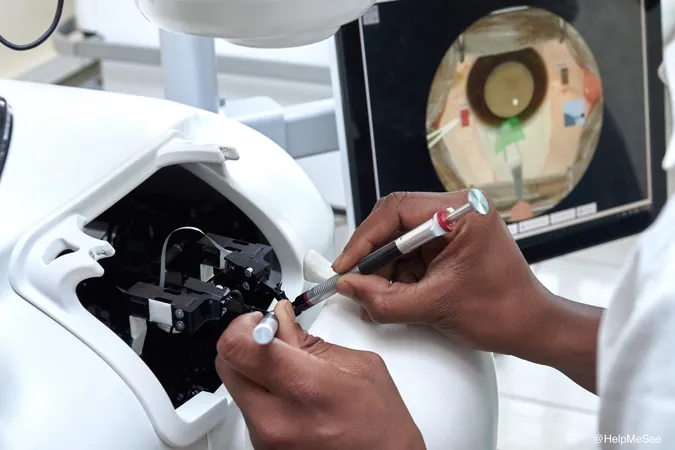
Supermassive Black Holes: The Mysterious Wobble That Fuels Cosmic Energy
2024-11-11
Author: Li
Supermassive black holes, the enigmatic giants that lurk at the centers of massive galaxies, have long fascinated astronomers. These celestial behemoths not only exert a formidable gravitational pull but also manipulate the very fabric of space and time when they spin. This distinct spinning behavior affects everything in their vicinity, including the "plates" from which they consume.
Surrounding these black holes are vast accretion disks, which are composed of flattened clouds of gas and dust. These disks play a critical role in the conversion of gravitational and kinetic energy into electromagnetic energy, manifesting as brilliant light. Interestingly, while dimmer accretion disks have been observed to wobble like tops slowing down, the behavior of ultraluminous accretion disks—those that shine exceptionally bright—has remained elusive until recently.
In an exciting study led by researchers at the University of Tsukuba, scientists set out to explore whether these brighter disks exhibit a similar wobbling behavior. The researchers published their groundbreaking findings in the prestigious Astrophysical Journal, detailing how energy from the accreting matter transforms into thermal, magnetic, and radiation energy, leading to powerful jets of plasma being expelled into space.
These supermassive black holes can be staggering in size—some weighing millions, or even billions, of times more than our sun. While it's understood that most galaxies harbor a supermassive black hole at their core, not all are accompanied by active accretion disks. For those that are, the intense gravitational forces create substantial friction within the disk, heating the gas and dust until they become plasma, and causing them to emit light so bright it can outshine the combined glow of all the stars in their galaxy.
One of the more dramatic phenomena observed from these black holes is the production of jets of plasma propelled outward at nearly the speed of light. This plasma is channeled toward the poles of the black hole by extremely strong magnetic fields. As these powerful emissions travel through space, they create what we know as quasars—some of the brightest objects in the universe.
To better understand these ultraluminous accretion disks, the research team conducted extensive simulations that integrated the dynamics of electromagnetic radiation with Einstein's general relativity. Their results confirmed that these disks do indeed wobble as they are dragged around, much like their dimmer counterparts. They observed that gas is predominantly ejected along the rotation axis of the disk, with the direction of ejection shifting over time due to the disk's wobble.
Moreover, this wobbling motion affects the jets produced by the black holes. This variance can explain the observed fluctuations in brightness that have puzzled scientists for years. By identifying the periodic changes in brightness, researchers can infer more about the dynamics of these astonishing cosmic phenomena.
Looking ahead, the University of Tsukuba team plans to confirm that the black holes responsible for these ultraluminous accretion disks are indeed spinning. This verification will involve comparing their simulations with long-term astronomical observations. Through this work, they hope to deepen our understanding of spinning black holes and their significant impact on the cosmos, ultimately enhancing our knowledge of the universe's most captivating mysteries.
Get ready for a cosmic revelation that could redefine your understanding of black holes! Stay tuned as scientists unlock the secrets of these celestial titans with groundbreaking discoveries!


 Brasil (PT)
Brasil (PT)
 Canada (EN)
Canada (EN)
 Chile (ES)
Chile (ES)
 España (ES)
España (ES)
 France (FR)
France (FR)
 Hong Kong (EN)
Hong Kong (EN)
 Italia (IT)
Italia (IT)
 日本 (JA)
日本 (JA)
 Magyarország (HU)
Magyarország (HU)
 Norge (NO)
Norge (NO)
 Polska (PL)
Polska (PL)
 Schweiz (DE)
Schweiz (DE)
 Singapore (EN)
Singapore (EN)
 Sverige (SV)
Sverige (SV)
 Suomi (FI)
Suomi (FI)
 Türkiye (TR)
Türkiye (TR)